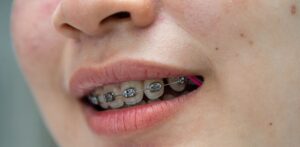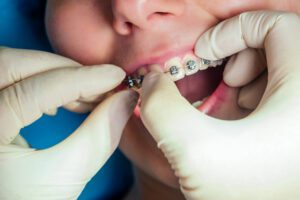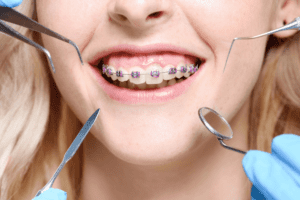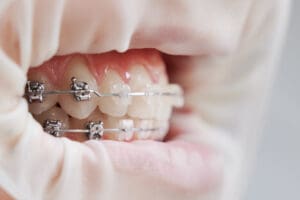How to Keep Braces From Cutting Your Mouth
Posted on November 5, 2024

The journey through orthodontic care can be a blend of excitement for a straightened smile and the challenge of managing occasional mouth sores and cuts. Many have heard the stories—or experienced firsthand—how braces can sometimes feel uncomfortable, pressing against cheeks and lips.
But rest assured, Smilebliss is here to share practical, proven strategies to prevent braces from cutting your mouth. Together, we’ll explore simple yet effective solutions to make your orthodontic experience as comfortable as possible.
We’re always here to help make your orthodontic experience smooth and comfortable. If you’re dealing with any braces-related discomfort, call us today and let us support you on the path to your ideal smile!
Understanding Braces Cuts
Learning how braces work involves understanding the various techniques orthodontists use to apply and adjust them. With the right approach, treatments can be more comfortable, and the results are often improved for patients’ smiles.
Causes of Mouth Cuts
- Braces Hardware: Metal brackets and wires on braces can sometimes irritate the mouth, especially when teeth are initially moving.
- Hard Foods: Eating hard foods can also lead to painful cuts.
Common Symptoms
- Early Irritation: Initial signs include soreness and tenderness.
- Visible Cuts: Cuts or abrasions may appear on the inner cheeks and lips.
- Swelling or Inflammation: If left untreated, swelling or inflammation around the braces may develop, leading to more severe mouth injuries.
Risk Factors
- Oral Hygiene Neglect: Skipping regular oral hygiene can increase irritation and discomfort.
- Sports Without Mouthguard: Playing sports without a mouth guard has led to preventable injuries, especially for those with braces. Specialized mouth guards and lip protectors can protect both the braces and the user’s mouth.
- Hard or Sticky Foods: Frequent consumption of hard or sticky foods can cause damage to braces, resulting in cuts.
Long-Term Effects
- Scar Tissue Formation: Ignoring these issues may lead to scar tissue inside the mouth, but discomfort typically subsides after a few weeks.
- Chronic Discomfort or Pain: Ongoing discomfort or pain can become a problem if left unaddressed.
- Risk of Infection: Untreated cuts may result in infections, which should be avoided.
Prevention Tips
 To minimize cuts and discomfort from braces, it’s smart to take proactive steps and see your orthodontist regularly for adjustments.
To minimize cuts and discomfort from braces, it’s smart to take proactive steps and see your orthodontist regularly for adjustments.
This keeps braces working properly and addresses potential issues early. Using lip protectors can provide added protection against cuts and sores.
Avoiding Certain Foods
Many people avoid hard, crunchy foods like nuts and popcorn as they can damage braces and lead to cuts. Sticky foods like caramel and gum are also best skipped. Instead, cutting fruits and vegetables into smaller pieces allows you to enjoy meals without the added worry.
Regular Check-Ups
Frequent orthodontist visits are helpful for effective orthodontic treatment and quickly resolving any issues with braces. Staying consistent with these visits is a good approach for effective care.
Quick Fixes for Discomfort
If braces are causing discomfort, these quick fixes can offer relief. Discover simple, effective ways to soothe pain from braces cuts.
- Applying Orthodontic Wax: Orthodontic wax can be a real relief when it comes to reducing irritation caused by metal braces. Roll a small piece of wax into a ball to handle it easily, and press it onto the bracket or wire that’s causing discomfort. Smoothing it over helps it stay in place, creating a barrier between the metal and your mouth.
- Using Salt Water Rinse: Saltwater rinses are another go-to. Mix one teaspoon of salt in a glass of warm water and rinse for 30 seconds, a few times a day. This approach promotes healing and soothes irritation.
- Aloe Vera Rinse: Known for its healing properties, pure aloe vera juice can be used as a mouth rinse. Swishing with aloe vera juice for a few minutes daily can speed up healing and bring soothing relief to cuts.
- Cold Water or Tea: For swelling or pain, cold water or chamomile tea works wonders. The cold helps reduce swelling and numbs the pain. Applying a cold compress on the outside of your mouth can also help if needed.
Handling Metal Bracket and Wire Issues
Understanding common bracket and wire issues is helpful. Regular check-ups and open communication with your orthodontist can make your braces experience easier and more effective. If a broken bracket is causing irritation, visiting your orthodontist promptly can restore comfort.
 Loose Brackets
Loose Brackets
Orthodontic wax can help secure a loose bracket temporarily and reduce irritation. If a bracket falls off, keep it safe for your orthodontist. Avoid hard or sticky foods until it can be fixed professionally.
Broken Wires
Sometimes a broken wire can snap and irritate the mouth. A pencil eraser can help bend the wire away, while wax can cover sharp ends to prevent cuts. These are temporary fixes, and seeing your orthodontist quickly is the best approach for a more lasting solution.
Sore Spots
Sore spots are common with new braces or after adjustments. Identifying these areas early allows you to apply orthodontic wax as a buffer between the braces and your cheeks or lips. For ongoing discomfort, over-the-counter pain relief can help until the soreness fades.
Emergency Kit Tips with Orthodontic Wax
Having an emergency kit can be very helpful. Include:
- Orthodontic wax for immediate relief
- Interproximal brushes and a toothbrush for hygiene
- Toothpaste for fresh breath
- A pencil for minor wire adjustments
- Small sterilized scissors for trimming loose ends
- A mouth guard to help prevent mouth injury during sports activities
With this kit on hand, you’re prepared for most issues that may arise, keeping you comfortable and ready to tackle your day.
When to Contact Your Orthodontist
 Knowing when to reach out to your orthodontist is important for a smooth treatment process while wearing braces.
Knowing when to reach out to your orthodontist is important for a smooth treatment process while wearing braces.
Persistent pain, loose or broken braces, and any questions about treatment are all good reasons to get in touch.
- Persistent and Severe Pain: Keep track of how long and intense the pain is. Over-the-counter pain relievers can help, but if pain persists after a few days, contact your orthodontist. It’s always better to check and confirm that all is well.
- Severe Cuts: For cuts, a saltwater rinse and a clean cloth to stop bleeding can help. If the cut is deep or bleeding doesn’t stop, reach out for assistance quickly to prevent further complications.
- Infection Signs: Look out for signs of infection like pus, swelling, or increased redness. A persistent bad taste or odor in the mouth is also concerning. At the first sign of these symptoms, getting in touch with your orthodontist is wise to get guidance on next steps.
- Regular Adjustments: Staying consistent with scheduled appointments allows for proper brace adjustments, minimizing discomfort. During these visits, openly discussing any concerns with your orthodontist helps to keep treatment smooth and comfortable.
Making the Braces Journey Easier Together
We’ve covered how to handle braces-related pain and cuts, from preventive measures to quick relief tips. Managing braces can be challenging, but with the right support, your journey to a beautiful, confident smile can be comfortable and worry-free.
Don’t wait to get the relief and expert care you deserve. Call Smilebliss today, and let’s make your path to a radiant smile smooth and easy!

 To minimize cuts and discomfort from braces, it’s smart to take proactive steps and see your orthodontist regularly for adjustments.
To minimize cuts and discomfort from braces, it’s smart to take proactive steps and see your orthodontist regularly for adjustments. Loose Brackets
Loose Brackets Knowing when to reach out to your orthodontist is important for a smooth treatment process while wearing braces.
Knowing when to reach out to your orthodontist is important for a smooth treatment process while wearing braces.